Extracted from a paper given by Philippa Faulks at the Canonbury Conference of Freemasonry, 2008.
In this paper, I hope to shed some light, not only on the nature of Count Alessandro di Cagliostro, but also on the nature of his mission to ‘perfect’ Freemasonry through the Natural and Supernatural sciences.
Unfairly, history has been somewhat unsympathetic to a man regarded as an occult charlatan and a purported embarrassment to Freemasonry.
His Egyptian Rite is in fact a beautiful work of Hermetic and Masonic philosophy, an introduction to higher alchemical teachings, blending what he believed were the three most honourable and noble arts in the world.
Cagliostro was famed throughout eighteenth century Europe for his reputation as a healer, alchemist and founder of Egyptian Freemasonry.
Unfairly, history has been somewhat unsympathetic to a man regarded as an occult charlatan and a purported embarrassment to Freemasonry.
His Egyptian Rite is in fact a beautiful work of Hermetic and Masonic philosophy, an introduction to higher alchemical teachings, blending what he believed were the three most honourable and noble arts in the world.
Cagliostro could not understand why there should be any separation between Freemasonry, Hermeticism and alchemy – for him they were the pathway to divinity, to perfection of the soul and was perplexed as to why they were regarded as separate entities.
He firmly believed that all these principles be taught in balance to achieve balance; without one there could be no other – they co-existed as a total spiritual path.
If regular Freemasonry could not understand this, then he would create his own ritual encompassing all the qualities he understood to be imperative for the perfection of mankind through the immortality of the soul.
His healing practices, his alchemy and teachings in the Egyptian Rite were a blend of natural and supernatural sciences – a perfect synergy in action.
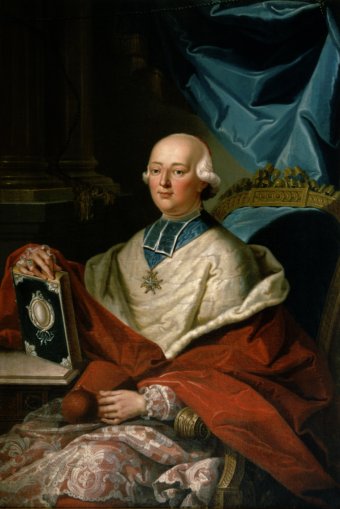
the bishop of strasburg louis ren douard cardinal de rohan
IMAGE linked: wikimedia
His work as a healer was well documented and indeed feted by many dignitaries across Western Europe.
The Bishop of Strasburg, Louis René Édouard, Cardinal de Rohan (1734-1803), employed him on several occasions, not only as chief alchemist but also as his physician.
One notable event was the illness of de Rohan’s cousin in Paris and after all attempts by the doctors there came to naught, the Cardinal begged Cagliostro to attend to him.
Incognito, he accompanied de Rohan to Paris whereby he proceeded to cure the cousin, restoring him to health within the week.
It was only after the cure that the healer’s identity was revealed, to much distaste amongst the failed Parisian physicians.
It is also rumoured that Cagliostro tended to the needs of Benjamin Franklin during his time in France as Ambassador of America.
Accounts of his proficiency in herbalism and magnetism are many; perhaps his greatest benevolent acts carried out in Strasburg during the 1780s where he was reputed to have healed over 15,000 people.
This he achieved with a combination of the laying on of hands, using mesmeric passes (magnetic healing) or by the administration of formulas and tinctures.
Cagliostro offered a variety of medicines, made up at his own expense, to which he dispensed to those in need – some recorded recipes consisted of purgatives, poultices for chest complaints and, to appease the ladies, his famous Pommade pour la visage – a facial cream with supposedly rejuvenating qualities.
The composer and historian Jean-Benjamin de Laborde (1734-1794) gave an account of Cagliostro’s healing clinics:
I have just come from his audience. Picture to yourself a vast hall filled with unfortunate creatures, almost all of them destitute, raising to heaven their hands so feeble that they can barely lift them to beg for the Count’s charity.
He listens to them, one after another, remembers every word each one says, leaves the room for a minute and then comes back laden with remedies which he dispenses to each of those unfortunate souls, repeating to each one what had been told him about that individual’s ills, and assuring all of them that they would soon be well again if they followed his prescriptions faithfully.
But those remedies alone would be insufficient, for the patients need soup to give them strength to support themselves.
Few of those poor souls have the means to buy anything. The sensitive Count divides his purse among them.
Happier to give than to receive, his joy is shown by his compassion.
Those wretched people, filled with gratitude, love and respect, fall at his feet, clasping his knees, calling him their savior, their father, their God.
The good man is touched, his eyes fill with tears.
He tries to hide them but he cannot. He weeps and the entire throng bursts into tears with him.
Blessed tears that delight the heart, whose charm cannot be conceived unless one has been fortunate enough to weep the same way..
Aside from being an accomplished healer, Cagliostro was renowned for his alchemical operations of which he was often called upon to perform.
A documented case was performed on June 7 1780, whereby he transmuted base metal into silver during a visit to a Masonic Lodge in Warsaw.
One of the members recorded a description of the experiment:
Cagliostro made me weigh out a pound of quicksilver which had been my property and had been already purified.
Before that he had bidden me distil some rainwater till all liquid had evaporated leaving a deposit which he called Virgin Earth or secunda materia.
Of this there remained about 16 grains. On his instructions I had also prepared an extract of lead.
After all these preparations were complete he went into the lodge, and he entrusted me with the task of carrying out the whole experiment with my own hands. I did this under his instructions in the following way:
The Virgin Earth was put into a flask, and half the quicksilver was poured over it.
Then I added 30 drops of the lead extract.
When the flask was then shaken a little, the quicksilver appeared to be dead or frozen stiff.
I then poured lead extract into the remaining quicksilver, but this quicksilver remained unaltered.
So I had to pour the two lots of quicksilver together into a larger flask.
After I had shaken the quicksilver, however, for some time, all assumed the same consistency. Its color turned dirty grey.
The whole was now shaken into a bowl which it half filled.
Cagliostro next gave me a small piece of paper, which proved to be only the outer wrapping of two others.
The innermost contained a shining carmine- colored powder, weighing perhaps one-tenth of a grain.
The powder was shaken into the bowl, and Cagliostro then swallowed the three wrapping papers.
While this was going on I filled up the bowl with plaster of Paris, which had already been prepared with warm water.
Though the bowl was already full, Cagliostro took it out of my hands, added some more plaster of Paris, and pressed it firmly with his hands. Then he gave it back to me to dry it over a charcoal fire.
The bowl was now placed in a bed of ashes over the wind furnace.
The fire was lit and the bowl left over it for half an hour.
It was then taken out with a pair of tongs and carried into the lodge.
The bowl was there broken, and in the bottom lay a lump of silver weighing fourteen ounces and a half.
Cagliostro’s most important reputed achievement however was the Elixir of Life, the fabled quintessence sought by thousands but reputed to have been drunk by a selected few, most notably Nicolas Flamel, his wife Pernelle and the Comte de St Germain.
The powerful lure of the ‘white drops’ or liquid gold, held many in awe and it was within Cagliostro’s sublime Maçonnerie Egyptienne that this goal was to be achieved.
Does Freemasonry contain alchemical secrets?
To answer this question it is Cagliostro’s Ritual of Egyptian Masonry that we should cast our light over today.
Detail from ‘Cagliostro’s Egyptian Rite of Freemasonry’
Copyright: Philippa Faulks/Robert LD Cooper
Photograph by Yvonne Cooper
His peculiar branch of Freemasonry has long been regarded as the shadowy egotism of an eccentric charlatan but a recent translation of the ritual has proven otherwise.
It is in fact the foundation of a progressive path of spiritual and practical alchemy; a tradition that had been at work secretly throughout Europe for several hundred years and before that combined within both orthodox and unorthodox religions, forged from its roots in the Ancient Egyptian Hermetic teachings.
Cagliostro believed that Freemasonry, as a concept, had existed since time began and had continued through the teachings of all the major religions as the quest to become ‘perfected’ and to allow its members to become at one with the Supreme being.
This was reflected in the historical references to the Pharaohs of Egypt and to the biblical figures of Moses, Elijah, Enoch and Jesus – all, who by becoming spiritually and physically perfect, were rewarded with immortal life at the side of the Divine.
There are many references that could be construed as being ‘of Freemasonry’ within many other doctrines and teachings.
For example within the Old Testament there are passages that imply quite readily that Moses, Enoch, Elijah, Elisha, Noah and his sons all had ‘knowledge’ that is represented modernly within Freemasonry…or indeed alchemy.
Enoch was seen by many to possess the heavenly secrets that would lead to immortality and deification, this knowledge he then passed on to his sons so that future generations could benefit – this wisdom was then transcribed and hidden within or on the ‘two pillars’.
Hermes also was reputed to have committed his teachings to the ‘two pillars’ of Egypt (the Twin lands of Upper and Lower Egypt), ‘It was said that this god [Thoth] possessed all secret knowledge on his 36,525 scrolls hidden under the heavenly vault (the sky) which could only be found by the worthy, who would use such knowledge for the benefit of mankind’.
Mackey’s Encyclopedia of Freemasonry observes:
In all the old manuscript records which contain the Legend of the Craft, mention is made of Hermes as one of the founders of Freemasonry.
Thus, in the Grand Lodge Manuscript, No. 1, whose date is 1583 and the statement is substantially and almost verbally the same in all the others that: “The great Hermarines that was Cubys sonne, the which Cubye was Semmes sonne, that was Noes sonne.
This same Hermarines was afterwards called Hernes the father of Wysdome; he found one of the two pillars of stone, and found the science written therein, and he taught it to other men”.
We know that the timeline of alchemical science weaved its way from Egypt to Greece with Pythagoras, Plato, Socrates and Aristotle as its disciples; it then spread through the major religions via the respective sects – the Essenes, the Sufi, Jewish Cabbalists, the Knights Templar.
It reached the echelons of Renaissance England to be embraced by luminaries such as Francis Bacon, Isaac Newton, Robert Boyle and Elias Ashmole and in turn ‘The Royal Society’.
The links with Freemasonry are as much to do with the fact that these enlightened men became involved in the ‘new’ organisation formed by Grand Lodge because they recognised the teachings that were held within it, as the fact that Freemasonry already held the key to the alchemical teachings regardless of the refutation that Freemasonry had originated from Ancient Egypt or some other civilisation.
It was plainly obvious to those who had studied the mysteries that this civilised version was in fact the old initiation rituals ‘revamped’.
This recognition was widespread, in Europe free thinkers, philosophers and magicians joined Freemasonry in their droves and esoteric Lodges gleefully sprang forth from the loins of the regular Mother Lodges.
The Lodge of Nine Muses in Paris yielded many nouveau alchemists including Benjamin Franklin, who once cryptically said:
Get what you can, and what you can hold. ‘Tis the Stone that will turn all your Lead into Gold.
Therefore, Cagliostro’s belief that mankind could only be saved if they were restored to the state of innocence as before the ‘fall’ was certainly not a new idea within Freemasonry and Cagliostro was far from alone in his mission to perfect mankind through the arcane secrets of the Egyptians.
In 17th century England, Sir Isaac Newton had already embraced the idea of the ‘new’ Freemasonry – for him a fundamental blend of alchemy and science that would give free rein to his creative mind.
It is also interesting to note that there are definite tracings of alchemical teachings within the early rituals of the Scottish Masons.
Masonic historian Robert Cooper, when studying the lodge rituals that existed during the time of William Schaw (1550-1603), discovered that there were several distinct alchemical references. He states:
There is one final fact that leads us to strongly believe that alchemical elements were incorporated into early Masonic ritual.
In 1755 an article was published in the Scots Magazine entitled The Mason’s Confession and the anonymous author explains that it is a lodge ritual given to him by a member of a lodge…..
Q. Where keep you the key of your lodge?
A. Between my tongue and my teeth, and under a lap of my liver, where all the secrets of my heart lies; for if I tell anything in the lodge, my tongue is to be taken out from beneath my chowks [cheeks] and my heart out from beneath my left oxter [armpit].
Robert continues:
Here for the first time we believe is a direct reference to Renaissance alchemical medicine within a Masonic ritual – and a very early one at that….The ritual is saying that if the Freemason reveals the lodge secrets… he must have a diseased heart for that is where ‘all the secrets’ lie.
The method of removal is through the left oxter [armpit] which fits exactly with the treatment of heart problems as diagnosed and practiced by Hermetic and Alchemical medical practitioners.
Ultimately a syncretic blend of Christianity, Cabala and Hermeticism had cast its spell over many a free thinker and lover of the esoteric and within Cagliostro’s era alone there were some notable contemporaries seeking to ‘restore’ Freemasonry to its ‘original splendour’ through the alchemical/Hermetic teachings.
In France, Dom Pernety (1716-96) (Societé des Illuminés d’Avignon), Martinez Pasqually (c.1727-74) (Elus Coens), Louis-Claude de Saint-Martin (1743-1803) (Martinism) and the Comte de Saint-Germain (c.1710-c.84) all operated systems of esoteric Freemasonry.
In Naples, the Hermetic School was propagating their own brand of teachings –Manuel Pinto da Fonseca (1681-1773) Grand Master of the Knights of Malta between 1741 and 1773 and alleged teacher and initiator of Cagliostro, was a proficient alchemist and Freemason.
Two other members were Prince Raimondo Sangro di San Severo (1710 – 1771), creator of the ‘alchemical chapel’ in San Severo and Baron Henry Theodore de Tschoudy (1724-1769) the author of ‘The Flaming Star’, a Hermetic/alchemical catechism.
Their alchemical vision echoed that of their predecessors, amongst others Albertus Magnus (1193-1280), Raymond Lulley (c.1235-1316), Nicolas Flamel (c.1330-1417) and Paracelsus (1493-1541) in their quest for enlightenment and immortality.
It is plain from reading the works of Pernety, Pasqually, Saint-Martin, Tschoudy and Cagliostro, that they were all using the premise of Hermetics as a fundamental truth in their individual missions.
Cagliostro used similar alchemical catechisms within the three degrees of his Egyptian Rite.
However, it was likely the Gold und Rosenkreuz Order (The Golden Rosicrucians) influenced Cagliostro and St Germain most strongly.
A high degree Masonic Order (which had a first mention in the early 1700s ); it had a strong emphasis on practical or laboratory alchemy.
This however was preparation for the higher teachings of theurgy and the pathway to divinity.
Although it has not been categorically proven that Cagliostro was a specific member of the Order, there is an interesting account of Cagliostro’s apparent initiation into a ‘Rosicrucian Order’ by the Count de St Germain that gives us a parallel description of the Gold und Rosenkreuz Order’s initiation ceremony.
Both rituals were held at night, the candidate had received preparation by a sponsor for several months and then met the initiator for the first time on the night and was ordered to undergo a selection of trials and oaths.
Both the Gold und Rosenkreuz Order and Cagliostro’s Ritual of Egyptian Freemasonry offered the initiate the path of the prophet, of regeneration and ultimately immortality of the soul.
This would involve an elaborate system of degrees and the teaching of alchemy, prophecy and theurgy over a period of many years.
The following is an extract from the constitutions of the Mother Lodge of Egyptian Freemasonry showing several passages stating the necessary requirements of the initiates and the length of time they would be required to spend as Egyptian Apprentice, Fellow Craft and Master:
The Masons would be put through three degrees, each one involving long hours of study and meditation before they were deemed sufficient to pass to the next:
11th In the primitive purity of Masonry there were only three degrees: you shall recognise and confer only three: Apprentice, Companion and Master.
12th The Apprentice shall only be received as a Companion after three years of submissiveness study. The Companion shall only attain the degree of Master at the end of five year’s work.
13th Apprentices, you shall be obedient to the Companions; they shall set out your work. And you, Companions, shall take and carry out the orders of the Masters: may jealousy never find a way into your hearts; between you may there only break out a fraternal rivalry.
14th Masters, to you shall belong the direction and inspection of the work; the government and administration of the Lodge; make yourself worthy of your functions and of your power; order nothing which is not conducive to the glory of my children and to the service of the rest of mankind.
Note the following mention of the ‘two workshops’ – these were the alchemical laboratories that would be the environment for the practical alchemical work to be undertaken by the Masons – not only were they taught the basics in the rituals but they were expected to put in a great many hours of practical and spiritual work each day.
15th The Apprentices and the Companions shall have two separate workshops, one on the left, and the other on the right of the Temple. The Masters shall gather in the chamber in the centre. May the labourer of lower degree be mindful not to cast imprudent glances at the works of superior degree. May they fear the disastrous consequences of reckless curiosity.
16th The two workshops shall be presided over by a Master who shall be appointed to this effect by the Masters’ Chamber; each of them shall elect an Orator, a Secretary and an Inspector Master of Ceremonies who shall exercise these offices for the duration of one year and in accordance with the instructions which shall be given to them.
How can we explain the Alchemical teachings within Freemasonry?
If we examine Cagliostro’s ritual, it is obviously alchemical but to the uninitiated it still seems bizarre and somewhat gibberish.
As all alchemy is effectively symbolic in nature it is therefore necessary to unpack each degree to understand the process and by unravelling Cagliostro’s ritual it leads us to look more deeply into modern Freemasonry and its alchemical roots.
Remember that Cagliostro’s ritual was in addition to the practical Hermetic teaching the Mason would be given.
The First Degree – representing the alchemical stage of Nigredo
The first degree of Egyptian Freemasonry was a reflective and deeply contemplative process whereby the Apprentice was to look within himself and understand his own nature.
The catechism of the First Degree was primarily that of Alchemy but the Apprentice was also entreated to enter into a search for God and to examine the self, all of this work was to be undertaken as being for the promotion of the Divine Glory.
Other subjects for study were Natural and Supernatural Philosophy.
Natural Philosophy was explained as the Marriage of the Sun and the Moon and knowledge of the seven metals (planets).
A maxim given in the Rite is:
Qui agnoscit martem, cognoscit artem
‘whoever recognizes Mars, knows art’..
This implies the struggle that man must make in his quest to understand not only himself but the wisdom of the universe.
In any spiritual quest, self-transformation and in alchemy one must face all our negative qualities and win – Mars (Iron) is a destructive force and can help us to ‘kill’ our Primal self and become resurrected.
The Rough Ashlar must be made smooth. The ‘art’, whatever it is, requires struggle, discipline and tenacity.
This is further shown in the ritual when the Candidate is placed in the Chamber of Reflection where there is a Tracing Board depicting a pyramid with a cave at its base; outside the cave is a representation of ‘Time’ (Saturn) in the form of an old man with a look of terror on his face, having difficulty entering the cavern.
The first stage of the ‘transmutation’ process often includes the descent into the bowels of the earth or a structure to face the shadowy underworld of our true self – our unconscious.
After his initiation and initial instruction, the newly made Egyptian Apprentice would then spend many hours over the next three years in meditation and prayer, to face his fears and his vices.
The process of turning ‘lead’ into ‘gold’ had begun – the alchemical stage of Nigredo or ‘blackening‘ the process whereby we learn to recognise our true self, good and bad.
This stage is related to depression and misery; all our vices and weaknesses are brought to the surface and we must face them before we can move onto the next stage of transformation known as Albedo or ‘whitening‘.
The Second Degree – representing the alchemical stage of Albedo
The Apprentice now enters the second stage of transmutation – that of purification.
Albedo is traditionally symbolised in several ways and is done so in the ritual – by the bright and morning star (Venus) hence the appearance of the seven pointed star above the Master’s throne; as a rose which is represented on a plaque in the temple and by silver (the Moon) used during the ritual in the form of a silver sword used to strike the shoulder of the Mason.
The Worshipful Master sees that the Mason has passed through the first stage and asks if he is now ready to pursue the course he has entered.
Is his mind sufficiently strengthened? And is he ready to come closer to the Divinity by acquiring a more perfect knowledge of himself and the sanctity of the power confided to him?
He must answer in the affirmative.
He is then told whilst being fumigated with incense, ‘I am now going to purify your body and your mind; this perfume is the symbol of that purification’.
After being robed in a white tunic he is conferred the title of Egyptian Fellow Craft.
Then occurs a powerful act, the Fellow Craft is given a liquid to drink, it is the ‘Primal Matter’ (the philosopher’s stone/the elixir of life) which represents the ‘death’ of the self and the release of the soul to reunite with the revitalised ‘matter’ or self to produce a glorious multi-coloured transformation often referred to as the ‘peacock’s tail’, which is then transformed into the all- encompassing ‘white’ light, the purification process.
The ‘peacock’s tail’ however may have a more negative side to it; one which the Mason must avoid for this state will cause the failure of his work.
This precarious state might include visions or delusions of the senses which must be conquered and disposed of otherwise they may lead to insanity or total disillusionment.
A peacock in a crowned alchemical flask; representing the stage in the alchemical process when the substance breaks out into many colours. Watercolour painting
IMAGE CREDIT: Attribution 4.0 International (CC BY 4.0) Wellcomecollection
The Mason is then breathed on by the Master and is made ‘a new man, totally different from what you have been until this day and such as you must be eventually’.
The Mason is now at the stage known as Citrinato – a sunrise in his life whereby he must now spend years working on his self, having been recently decimated by Nigredo and now seeking purification and consolidation of that work through the continuing process of Albedo.
The Third Degree – representing the alchemical stage of Rubedo
Rubedo – or ‘Redness’ is the third stage of alchemy which is a continuation of Albedo, sometimes described as the combination of the ‘White Queen’ and the ‘Red King’, the union of male and female, known as the Sacred Marriage (coniunctio oppositorum).
The old has been left behind and the new inner enlightened self has blossomed forth.
In the Ritual of the third degree, the Mason is brought ‘back to life’ – he has traveled a long and sometimes torturous path, from the depths of Nigredo, where he came face to face with his real self, through the work of balancing and purifying his emotions by way of Albedo, to the brink of success with the beautiful sunrise of Citrinato.
He now stands at the point of rebirth; he must be reborn as the Rebis, the ‘divine androgyne’, representing the union of love and the soul – which then creates the ‘divine birth’ – that of spiritual Gold.
The Mason is put into the tabernacle to receive the blessing of the seven angels, then brought before the Master to be purified and ‘raised’ to the status of Egyptian Master.
He has reflected deeply on the tracing board and then asked the following –
Q. What does the tracing board represent?
A. A Phoenix being consumed in the middle of a blazing pyre, a sword and the staff of Mercury, Time with wings, a Master Mason Elect of God, an upturned hourglass and the broken scythe of Time.
Q. What is the meaning of the Phoenix?
A. That a true Mason may rise from the ashes, that he can renew himself, be rejuvenated at will like that bird, and that it is with this certificate that one can say –
Et renovabitur plumas meas [And you pass bolstered and renewed]Q. What is signified by Time and the Master Mason who is clipping his wings?
A. That when a good Mason succeeds in clipping the wings of Time, his life no longer has a fixed term.
Q. What is meant by the broken scythe?
A. That for a man who is immortal the measurement of time becomes pointless.
Q. What were you taught in the interior of the Temple?
A. The most sublime knowledge.
Q. Of what does that consist?
A. After I had received a portion of the power which God desired to grant to the Grand Copht our Founder, I was taught the means of regenerating degenerate man.
Q. How did you spend your time within that place?
A. In glorifying God and in completing the tasks ordained by our great founder and Master.
The blood and life has returned and the Mason can accept his spiritual inheritance, becoming what he has always been and finally realizing his divine essence whilst still a man.
The rough ashlar is now smoothed or as Franciscus Kieser wrote:
As the body used to be slow, rough, impure, dark and destructible…so rebirth unifies it with the soul and spirit, vivified and volatile, light and penetrating, pure, refined and clear, overflowing with energy, indestructible and full of energy, and it is able to maintain this..
How does this information relate to modern day Freemasonry?
Cagliostro in effect performed a rectificando on his ‘modern’ 18th century Freemasonry – that is to say in alchemical terms, that he sought ‘to put right’ in the moral sense and reinstate the true nature of the teachings.
The fundamentals of Hermetic and alchemical science are to be found littered throughout ancient and modern Freemasonry; the following are examples of this theory:
The Two pillars – the all-important duality representing the two hollow pillars where Hermes was reputed to have hidden his secrets; also the two pillars at the Temple of Solomon.
The word ‘Herme’ in Greek means pillar. On the Cabbalistic Tree of Life the middle pillar shows the sun, moon and mercury, representing the sun, moon and Hiram or the sun, moon and the Master of the Lodge.
Both the bible and Freemasonry mention two pillars: one of brick and one of stone.
The Egyptian Book of Per-em-Hru (Book of the Dead) also depicts two pillars: one black (upon a white background) representing darkness or the negative confessions; one white (upon a black background) representing the rising sun and the positive confessions.
The two pillars represented the northern and southern columns to the ‘Gate of the Hall of Truth’, known as the Pillars of Shu. Or as described by G. H. Frater (Mathers) in “The Core of the Tradition”:
The general design of the White Pillar is a pictorial synthesis of the gradual freeing of the soul from the body, left to be mummified and its union with Osiris, Lord and Judge of the Dead and of the resurrection, the sun in his rising….The Black Pillar symbolizes the pathway of darkness, the Negative Confession, as the White Pillar represents the Hymn to the Rising Sun, the Pathway of Light, and the Positive Confession.
The Sun and the Moon – representing the Sacred Marriage, the union of the divine spirit with the soul
As described in the Gospel of Thomas, verse 22:
When you make the two into one, and when you make the inner like the outer and the outer like the inner, and the upper like the lower, and when you make male and female into a single one, so that the male will not be male nor the female be female, when you make eyes in place of an eye, a hand in place of a hand, a foot in place of a foot, an image in place of an image, then you will enter the Kingdom.
In Freemasonry, the two Wardens of the Lodge represent the Sun and Moon as they are situated next to two of the Lesser Lights of Freemasonry; they also represent the level and the plumb line, which when joined creates the square.
The seven officers – representing the seven planets/seven angels/seven liberal arts
Mercury | Raphael | Logic
Sun | Michael | Arithmetic
Moon | Gabriel | Grammar
Mars | Zamael | Music
Venus | Anael | Rhetoric
Saturn | Kassiel | Astronomy
Jupiter | Sachiel | Geometry
The Square and the Compasses – the symbols of the female (square) and the male (compasses)
Described by some alchemists as the ‘Moon-Square’ and the ‘Sun-Compass’, which when brought together in the sacred marriage (the bringing together of the superior/inferior and the outside/inside) create the Rebis – the Two in One, or from the latin res bina – dual matter.
The Rebis then creates the resurrected Offspring of Light i.e. gold – eternal life
Perhaps to clarify these discoveries further we need to delve briefly into the physical alchemical stages (of which a much greater analysis of this process can be read in Timothy Hogan’s work, The Alchemical Keys to the Masonic Ritual.
In the following, I aim to illustrate how the three degrees in Freemasonry could be shown to be closely aligned to the three stages of the alchemical process.
Note the apparent reference to Masonic symbolism, signs and penalties within the alchemical process:
Example 1 – the first degree / the first stage of alchemy – blackening
Firstly a plant (or possibly mineral) would be chosen for a specific purpose either for healing or for ridding the body of something negative.
The plant would be attuned/correspond to one of the seven planets and therefore be harvested on the corresponding day and hour.
The alchemical process was executed as follows:
• The plant must be pulled out by the root (first degree penalty)
• No metal must be used during any of the process to cut the plant (not allowing metal in the temple – first degree)
The plant is then ground up and put into a flask and covered with freshly collected dew or rectified spirit of wine. The dew would allow the essential oils in the plant to separate whereas the spirit would absorb the oils.
• The mixture is then left for one day to steep, however it should be shaken vigorously twice within those 24 hours to separate the oils (first degree penalty)
• After this time the herb turns black – a process called ‘Caput Mortem’, ‘dead head’ or ‘the cutting off of the head’ (first degree penalty)
This is the first stage of alchemy known as ‘blackening’.
Watercolour representing the culmination of the alchemical Great Work or the star of hope that inspires the alchemist, after Salomon Trismosin’s sixteenth-century alchemical manuscript, Splendor Solis.
IMAGE CREDIT: Wellcome Library Attribution 4.0 International (CC BY 4.0)
Example 2 – the second degree / the second stage of alchemy – whitening
The blackened herb is then distilled seven times until it becomes a reddish liquid and then a vapour – this is then extracted and purified into a white fluid and a clear liquid. The white fluid is called ‘mercury’ by the alchemists, the clear liquid is ‘sulphur’ and when mixed they are termed the ‘heavenly dew’.
• Dew is often symbolized as ‘a divine blessing’ it is also a metaphor for the spiritual gift of ‘resurrection’ (for reference see Psalm 133 – mentioning the Dew of Hermon quoted in Masonic Ritual)
Also in Isiah (26:19) he speaks of the resurrecting nature of ‘dew’:
Thy dead men shall live, together with my dead body shall they arise. Awake and sing, yet they dwell in dust; for thy dew is the dew of herbs, and the earth shall cast out the dead.
Or the Jewish Encyclopedia describes it thus:
…the angel said – “Dost thou desire to give Thy Law unto the dead or unto the living?” Then God dropped the dew of Resurrection upon all and they revived.
Dew is also connected with Manna, another substance of spiritual sustenance which has been said to crystallise out of the dew. The word Manna means ‘What is it?’
The process of distillation is achieved by the oils and liquids separating from the body of the herb, rising to the highest point of the distillation apparatus to then drop down into separate flasks.
• In alchemical symbolic texts this was once symbolized by vultures plucking out the heart and other organs from the body and taking them to a high tower – which represented the Athenor, the distillation apparatus used by the alchemists (second degree penalty)
Example 3 – the third degree/the third stage of alchemy – reddening
The remaining herb is classed as ‘salt’ and is now a fermented and digested black mass that was called ‘feces’ due to its odour and consistency.
• The alchemists would then burn the ‘feces’ in a crucible or dish (bowel) until it was reduced to ashes – this process was known as ‘killing the herb’ (third degree penalty)
The ashes or ‘salts’ would at first be black but with the addition of heat (fire) and air they would become red and when mixed with a combination of alkali and/or acids they would turn white.
• The remaining substance was given several names – ‘spiritualised, secret or raised salts’; ‘hidden manna’; ‘bread’ or even ‘the stone the builder rejected’.
Psalm 118:22 (King James Version) The stone the builders rejected has become the capstone. The Mason should become a spiritual capstone – perfectly square, the emblem of morality. The cube denotes ‘Truth’ and Mercury or Hermes is represented by a cube.
This substance was of great importance and only a true alchemist would know its worth – that of being the key to revitalising the ‘herb’, of ‘bringing it back to life’. It was believed to be present in all things and was called the ‘seed of metals’ depicted alchemically in various plants especially evergreens (acacia was placed upon Hiram’s grave)
• The final stage of alchemy – the ‘secret salts’ must be raised or brought alive once more. By a special process the white powder would first turn black and then red as blood, helped by the Sun and the Moon (the Senior and Junior Wardens) to become the ‘Red Lion’, which would be raised (by ‘the lion’s paw) to become a ‘Master’ (Hiram Abiff).
The red ashes could then be combined with the previously collected dew and oils – this combined liquid was then known as the Elixir of Life.
The three degrees/alchemical stages are complete – base matter is turned to immortal matter.
This red liquid, after more special processes, could be turned white once more and added to base metals to transmute them into gold. This final phase was sometimes also known as the ‘white eagle’.
A three-headed eagle in a crowned alchemical flask, representing mercury sublimated three times; from Salomon Trismosin’s ‘Splendor solis’. Watercolour painting.
IMAGE License Attribution: wellcome collection International (CC BY 4.0)
If we recall that in Cagliostro’s second degree “the Fellow Craft is given a liquid to drink, it is the ‘Primal Matter’ [the elixir of life]” and compare it to a section from regular Freemasonry’s Fellow Craft Degree – “You are now entitled to wages, as such; which are, the Corn of nourishment [the ‘manna’ or ashes = salt], the Wine of refreshment [the red liquid or ‘dew’ = Mercury], and the Oil of joy [oil = Sulphur], which denote peace, harmony, and strength.
Therefore:
Salt (herb) + Mercury (dew) + Sulphur (oil) = the Elixir of Life – the healer of all ills and the route to immortality.
Watercolour representing the culmination of the alchemical Great Work or the star of hope that inspires the alchemist, after Salomon Trismosin’s sixteenth-century alchemical manuscript, Splendor Solis.
IMAGE CREDIT: Wellcome Library
Attribution 4.0 International (CC BY 4.0)
In conclusion, we can see the effect that Cagliostro, as an alchemist, healer and Freemason has had, not only on 18th century Freemasonry but that of modern Masonry.
His mission was to turn the base elements of Freemasonry as it stood into the gold of its origins and in turn use this Hermetic knowledge to heal mankind.
That his Egyptian ritual has recently been brought to light once more could be seen as a way of helping modern Masons recognize and understand the hidden ‘gold’ within the Craft. The base of the matter is not whether there is alchemy within Freemasonry but that Freemasonry is alchemy.
Hermes left a message saying that: his teachings would remain hidden until those worthy of understanding would once more unravel the wisdom…perhaps that time has come?

Article by: Philippa Lee. Editor

Philippa Lee (writes as Philippa Faulks) is the author of eight books, an editor and researcher.
Philippa was initiated into the Honourable Fraternity of Ancient Freemasons (HFAF) in 2014.
Her specialism is ancient Egypt, Freemasonry, comparative religions and social history. She has several books in progress on the subject of ancient and modern Egypt. Selection of Books Online at Amazon

The Masonic Magician: The Life and Death of Count Cagliostro and His Egyptian Rite
By: Philipa Faulks (Author), Robert Cooper (Author)
Miracle-worker or man of straw? Count Alessandro Cagliostro was a cult figure of European society in the tumultuous years leading to the French Revolution.
An alchemist, healer and Freemason, he inspired both wild devotion and savage ridicule – as well as novels by Alexandre Dumas, a drama by Goethe and Mozart’s opera The Magic Flute.
Count Alessandro Cagliostro’s sincere belief in the magical powers, including immortality, conferred by his Egyptian Rite of Freemasonry won him fame, but made him dangerous enemies, too.
His celebrated travels through the Middle East and the capitals of Europe ended abruptly in Rome in 1789, where he was arrested by the Inquisition and condemned to death for heresy.
The Masonic Magician tells Cagliostro’s extraordinary story, complete with the first English translation of his Egyptian Rite of Freemasonry ever published.
The authors examine the case made against him, that he was an impostor as well as a heretic, and find that the Roman Church, and history itself, have done him a terrible injustice.
This engaging account, drawing on remarkable new documentary evidence, shows that the man condemned was a genuine visionary and true champion of Freemasonry.
His teachings have much to reveal to us today, not just of the secrets of the movement, but of the mysterious hostility it continues to attract.
Recent Articles: Esoteric Masonry
 Explore the multifaceted concept of the Divine across various cultural and religious perspectives. Delve into the intriguing deliberations on the Great Architect, Demiurge, and their roles in shaping our understanding of the cosmos, blending philosophical, theological, and metaphysical insights into a rich tapestry of human spirituality. |
 Unveiling the Mysteries: Explore the Enigmatic World of Rosicrucianism! Dive into the fascinating origins and teachings of the Rosicrucian tradition, shaped by the mythical figure Christian Rosenkreuz. Discover the secrets of alchemy, spiritual transformation, and esoteric knowledge. Unlock the hidden wisdom that has captivated seekers for centuries. Unleash your inner mystic today! |
 An Esoteric Interpretation of the Holy Royal Arch Delving into the profound mysteries of the Holy Royal Arch, Matt DA Fletcher offers an esoteric interpretation that challenges the conventional understanding of Freemasonry. While Craft Masonry is clear in its teachings, the Royal Arch remains an enigma for many. Fletcher's exploration uncovers the symbolic and philosophical depths of this degree, revealing its significance in the Mason's journey towards reintegration with the Creator. |
 Stoicism, Freemasonry, and the Modern Man Discover how the ancient wisdom of Stoicism can enrich Freemasonry and modern life. Dr. Chacón-Lozsán Francisco M.˙.M.˙. explores Stoic principles like virtue, resilience, and inner peace, offering practical insights for today's challenges. Learn how these timeless teachings can foster personal growth, ethical conduct, and emotional stability. |
 Explore the evolution of Masonic rites with the Universal Rite, a modern adaptation of the Ancient and Accepted Scottish Rite. Discover how it integrates contemporary principles, promotes intercultural dialogue, and ensures the timeless values of Freemasonry remain relevant in today's world. |
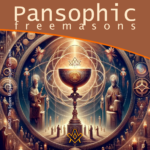 Unveil the secrets of Pansophic Freemasonry, a transformative journey through the ancient mystical traditions. Delve into the sacred realms of Rosicrucianism, Templar wisdom, Kabbalah, Gnosticism, and more. Discover the Graal, the sacred Grail that connects all esoteric paths. Embrace a holistic spiritual quest that reveals the profound mysteries of self and the universe. |
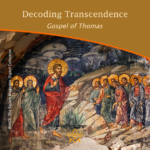 Dive into a spiritual journey where self-awareness is the key to enlightenment. The Gospel of Thomas and Masonic teachings converge on the profound truth that the path to transcendent wisdom lies within us. Embrace a diversified understanding of spirituality, emphasizing introspection as the gateway to a universally respected enlightenment. Explore, understand, transcend. |
 Philosophy the Science of Estimating Values Philosophy is the science of estimating values. The superiority of any state or substance over another is determined by philosophy. By assigning a position of primary importance to what remains when all that is secondary has been removed, philosophy thus becomes the true index of priority or emphasis in the realm of speculative thought. The mission of philosophy a priori is to establish the relation of manifested things to their invisible ultimate cause or nature. |
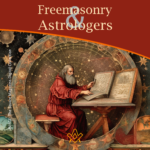 Unlocking the Mysteries: The Surprising Connection Between Freemasonry and Astrologers Revealed! Delve into the intriguing world of Freemasonry and explore its ties to astrological practices. Discover how these two distinct realms intersect, offering a fascinating glimpse into the esoteric interests of some Freemasons. Uncover the hidden links and unravel the enigmatic bond between Freemasonry and astrologers! |
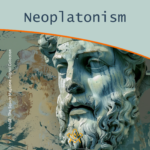 Neoplatonism, a philosophy with profound influence from the 3rd to the 6th century, merges Platonic ideals with Eastern thought, shaping Western and Middle-Eastern philosophy for two millennia. It emphasizes the unity of the individual with the supreme 'One', blending philosophy with theology and impacting major religious and philosophical movements, including Christianity and Islam. |
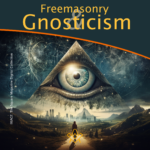 The enigmatic allure of Freemasonry's ancient rituals and Gnosticism's search for hidden knowledge capture the human spirit's endless quest for enlightenment. Between the stonemason's square and the Gnostic's divine spark lies a tantalizing intersection of philosophy, spirituality, and the pursuit of esoteric wisdom. Both traditions beckon with the promise of deeper understanding and moral elevation, inviting those who are drawn to unravel the tapestries of symbols and allegories. Whether through the fellowship of the lodge or the introspective journey of the soul, the paths of Freemasonry and Gnosticism represent a yearning to connect with something greater than ourselves—an impulse as old as time and as compelling as the mysteries they guard. |
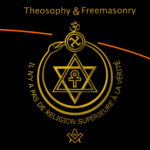 Embark on a journey through time and spirituality with our in-depth exploration of the Theosophical Society's Seal. This ancient emblem, rich with symbols, bridges humanity with the cosmos, echoing through the world's great faiths and diverse cultures. Our paper delves into the six mystical symbols, untangling their profound meanings and tracing their presence in historic art worldwide. Unaffiliated with worldly movements, these symbols open a window to esoteric wisdom. We also probe potential parallels with Freemasonry, seeking threads that might connect these storied organizations. Join us in unveiling the universal language of the spirit encoded within this enigmatic Seal. |
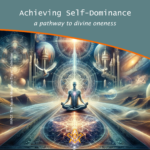 Discover the pathway to divine oneness through the concept of self-dominance. This thought-provoking essay explores the profound connection between self-control, spiritual growth, and achieving unity with the divine essence. With an interdisciplinary approach, it offers practical steps towards expanding consciousness and deepening our understanding of the divine. |
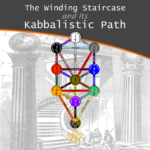 The Winding Staircase and its Kabbalistic Path The Winding Staircase in freemasonry is a renowned symbol of enlightenment. In this article, we explore its connection to Kabbalistic thought and how it mirrors the inner growth of a candidate as he progresses throughout his Masonic journey. From faith and discipline in Binah, to strength and discernment in Geburah, and finally to victory and emotional intuition in Netzach, each step represents a crucial aspect of personal development. Join us as we delve into the esoteric meanings of this powerful symbol. |
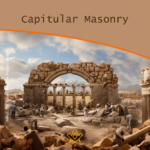 Unravel the mystic origins of Capitular Masonry, a secretive Freemasonry branch. Explore its evolution, symbolic degrees, and the Royal Arch's mysteries. Discover the Keystone's significance in this enlightening journey through Masonic wisdom, culminating in the ethereal Holy Royal Arch. |
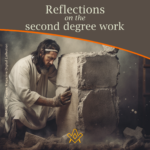 Reflections on the Second Degree Work Bro. Draško Miletić offers his reflections on his Second Degree Work – using metaphor, allegory and symbolism to understand the challenges we face as a Fellow Craft Mason to perfect the rough ashlar. |
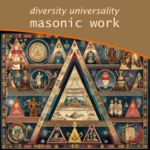 Diversity and Universality of Masonic Work Explore the rich tapestry of Masonic work, a testament to diversity and universality. Uncover its evolution through the 18th century, from the stabilization of Symbolic Freemasonry to the advent of Scottish rite and the birth of Great Continental Rites. Dive into this fascinating journey of Masonic systems, a unique blend of tradition and innovation. Antonio Jorge explores the diversity and universality of Masonic Work |
 Nonsense as a Factor in Soul Growth Although written 100 years ago, this article on retaining humour as a means of self-development and soul growth is as pertinent today as it was then! Let us remember the words of an ancient philosopher who said, when referring to the court jester of a king, “It takes the brightest man in all the land to make the greatest fool.” |
 Freemasonry: The Robe of Blue and Gold Three Fates weave this living garment and man himself is the creator of his fates. The triple thread of thought, action, and desire binds him when he enters into the sacred place or seeks admittance to the Lodge, but later this same cord is woven into the wedding garment whose purified folds shroud the sacred spark of his being. - Manly P Hall |
 By such a prudent and well regulated course of discipline as may best conduce to the preservation of your corporal and metal faculties in the fullest energy, thereby enabling you to exercise those talents wherewith god has blessed you to his glory and the welfare of your fellow creatures. |
 Jacob Ernst's 1870 treatise on the Philosophy of Freemasonry - The theory of Freemasonry is based upon the practice of virtuous principles, inculcating the highest standard of moral excellence. |
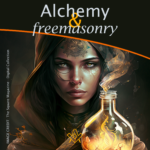 Alchemy, like Freemasonry, has two aspects, material and spiritual; the lower aspect being looked upon by initiates as symbolic of the higher. “Gold” is used as a symbol of perfection and the earlier traces of Alchemy are philosophical. A Lecture read before the Albert Edward Rose Croix Chapter No. 87 in 1949. by Ill. Bro. S. H. Perry 32° |
 The spirit of the Renaissance is long gone and today's globalized and hesitant man, no matter ideology and confession, is the one that is deprived of resoluteness, of decision making, the one whose opinion doesn't matter. Article by Draško Miletić, |
 A Mason's Work in the First Degree Every Mason's experiences are unique - here writer and artist Draško Miletić shares insights from his First Degree Work. |
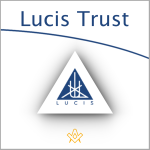 Initiation and the Lucis Trust The approach of the Lucis Trust to initiation may differ slightly to other Western Esoteric systems and Freemasonry, but the foundation of training for the neophyte to build good moral character and act in useful service to humanity is universal. |
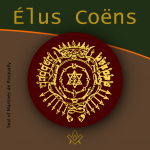 Who were the mysterious 18th century Élus Coëns – a.k.a The Order of Knight-Masons Elect Priests of the Universe – and why did they influence so many other esoteric and para-Masonic Orders? |
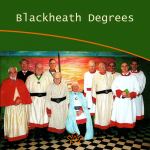 Bro. Chris Hatton gives us his personal reflections on the history of the 'house at Blackheath and the Blackheath Orders', in this wonderful tribute to Andrew Stephenson, a remarkable man and Mason. |
 Book Review - Cagliostro the Unknown Master The book review of the Cagliostro the Unknown Master, by the Editor of the book |
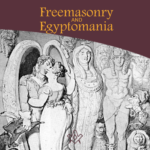 We explore fascinating and somewhat contentious historical interpretations that Freemasonry originated in ancient Egypt. |
 Is Freemasonry esoteric? Yes, no, maybe! |
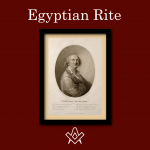 Egyptian Freemasonry, founder Cagliostro was famed throughout eighteenth century Europe for his reputation as a healer and alchemist |
Recent Articles: in people series
 Celebrate the extraordinary legacy of The Marquis de La Fayette with C.F. William Maurer's insightful exploration of Lafayette's 1824-25 tour of America. Discover how this revered leader and Freemason was honored by a young nation eager to showcase its growth and pay tribute to a hero of the American Revolution. |
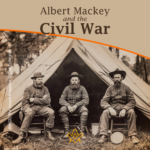 Albert Mackey and the Civil War In the midst of the Civil War's darkness, Dr. Albert G. Mackey, a devoted Freemason, shone a light of brotherhood and peace. Despite the nation's divide, Mackey tirelessly advocated for unity and compassion, embodying Freemasonry's highest ideals—fraternal love and mutual aid. His actions remind us that even in dire times, humanity's best qualities can prevail. |
 Discover the enduring bond of brotherhood at Lodge Dumfries Kilwinning No. 53, Scotland's oldest Masonic lodge with rich historical roots and cultural ties to poet Robert Burns. Experience rituals steeped in tradition, fostering unity and shared values, proving Freemasonry's timeless relevance in bridging cultural and global divides. Embrace the spirit of universal fraternity. |
 Discover the profound connections between John Ruskin's architectural philosophies and Freemasonry's symbolic principles. Delve into a world where craftsmanship, morality, and beauty intertwine, revealing timeless values that transcend individual ideas. Explore how these parallels enrich our understanding of cultural history, urging us to appreciate the deep impacts of architectural symbolism on society’s moral fabric. |
 Discover the incredible tale of the Taxil Hoax: a stunning testament to human gullibility. Unmasked by its mastermind, Leo Taxil, this elaborate scheme shook the world by fusing Freemasonry with diabolical plots, all crafted from lies. Dive into a story of deception that highlights our capacity for belief and the astonishing extents of our credulity. A reminder – question everything. |
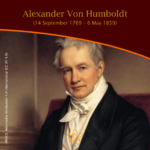 Dive into the extraordinary legacy of Alexander Von Humboldt, an intrepid explorer who defied boundaries to quench his insatiable thirst for knowledge. Embarking on a perilous five-year journey, Humboldt unveiled the Earth’s secrets, laying the foundation for modern conservationism. Discover his timeless impact on science and the spirit of exploration. |
 Voltaire - Freethinker and Freemason Discover the intriguing connection between the Enlightenment genius, Voltaire, and his association with Freemasonry in his final days. Unveil how his initiation into this secretive organization aligned with his lifelong pursuit of knowledge, civil liberties, and societal progress. Explore a captivating facet of Voltaire's remarkable legacy. |
 Robert Burns; But not as we know him A controversial subject but one that needs addressing. Robert Burns has not only been tarred with the presentism brush of being associated with slavery, but more scaldingly accused of being a rapist - a 'Weinstein sex pest' of his age. |
 Richard Parsons, 1st Earl of Rosse Discover the captivating story of Richard Parsons, 1st Earl of Rosse, the First Grand Master of Grand Lodge of Ireland, as we explore his rise to nobility, scandalous affiliations, and lasting legacy in 18th-century Irish history. Uncover the hidden secrets of this influential figure and delve into his intriguing associations and personal life. |
 James Gibbs St. Mary-Le-Strand Church Ricky Pound examines the mysterious carvings etched into the wall at St Mary-Le-Strand Church in the heart of London - are they just stonemasons' marks or a Freemason’s legacy? |
 Freemasonry and the Royal Family In the annals of British history, Freemasonry occupies a distinctive place. This centuries-old society, cloaked in symbolism and known for its masonic rituals, has intertwined with the British Royal Family in fascinating ways. The relationship between Freemasonry and the Royal Family is as complex as it is enduring, a melding of tradition, power, and mystery that continues to captivate the public imagination. |
 A Man Of High Ideals: Kenneth Wilson MA A biography of Kenneth Wilson, his life at Wellington College, and freemasonry in New Zealand by W. Bro Geoff Davies PGD and Rhys Davies |
 In 1786, intending to emigrate to Jamaica, Robert Burns wrote one of his finest poetical pieces – a poignant Farewell to Freemasonry that he wrote for his Brethren of St. James's Lodge, Tarbolton. |
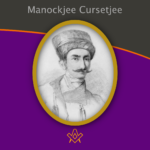 Alex Lishanin explores Mumbai and discovers the story of Lodge Rising Star of Western India and Manockjee Cursetjee – the first Indian to enter the Masonic Brotherhood of India. |
 Aleister Crowley - a very irregular Freemason Aleister Crowley, although made a Freemason in France, held a desire to be recognised as a 'regular' Freemason within the jurisdiction of UGLE – a goal that was never achieved. |
 Sir Joseph Banks – The botanical Freemason Banks was also the first Freemason to set foot in Australia, who was at the time, on a combined Royal Navy & Royal Society scientific expedition to the South Pacific Ocean on HMS Endeavour led by Captain James Cook. |
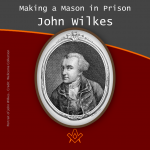 Making a Mason in Prison: the John Wilkes’ exception? |
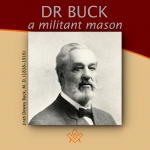 "To be a good man and true" is the first great lesson a man should learn, and over 40 years of being just that in example, Dr Buck won the right to lay down the precept. |
 Elias Ashmole: Masonic Hero or Scheming Chancer? The debate is on! Two eminent Masonic scholars go head to head: Yasha Beresiner proposes that Elias Ashmole was 'a Masonic hero', whereas Robert Lomas posits that Ashmole was a 'scheming chancer'. |
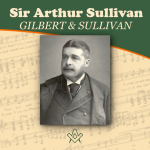 Sir Arthur Sullivan - A Masonic Composer We are all familiar with the comic operas of Gilbert and Sullivan, but did you know Sullivan was a Freemason, lets find out more…. |
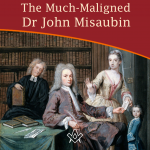 The Much-Maligned Dr John Misaubin The reputation of the Huguenot Freemason, has been buffeted by waves of criticism for the best part of three hundred years. |
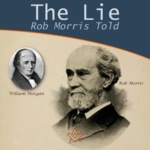 Was William Morgan really murdered by Masons in 1826? And what was the lie Masonic author Rob Morris told? Find out more in the intriguing story of 'The Morgan Affair'. |
 Lived Respected - Died Regretted Lived Respected - Died Regretted: a tribute to HRH The Prince Philip, Duke of Edinburgh |
 Who was Moses Jacob Ezekiel, a Freemason, American Civil War Soldier, renowned sculptor ? |
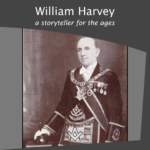 A Masonic author and Provincial Grand Master of Forfarshire in Scotland |
 Who was Philip, Duke of Wharton and was he Freemasonry’s Loose Cannon Ball ? |
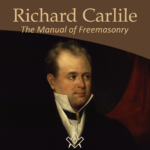 Richard Carlile - The Manual of Freemasonry Will the real author behind The Manual of Freemasonry please stand up! |
 Nicholas Hawksmoor – the ‘Devil’s Architect’ Nicholas Hawksmoor was one of the 18th century’s most prolific architects |
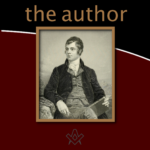 By Bro. Anthony Oneal Haye (1838-1877), Past Poet Laureate, Lodge Canongate Kilwinning No. 2, Edinburgh. |
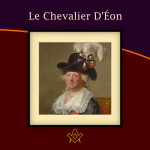 The Curious Case of the Chevalier d’Éon A cross-dressing author, diplomat, soldier and spy, the Le Chevalier D'Éon, a man who passed as a woman, became a legend in his own lifetime. |
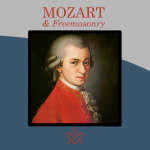 Mozart Freemasonry and The Magic Flute. Rev'd Dr Peter Mullen provides a historical view on the interesting topics |
masonic knowledge
to be a better citizen of the world
share the square with two brothers

click image to open email app on mobile device














